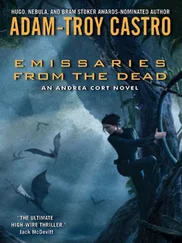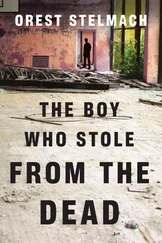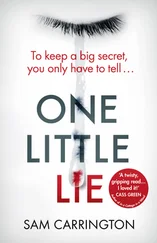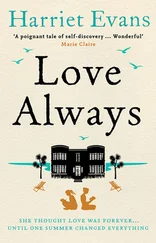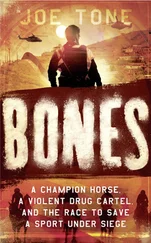It was a heady experience for me, as well. To produce my drawing, I'd been given access to confidential information, and I even became involved with prosecution strategy. The excitement was intoxicating, and I found myself rethinking my current career as a medical illustrator, which began to seem humdrum and predictable by comparison. Brian knew how much I'd come to yearn for something new and exciting, which may have been why he recommended me for the facial reconstruction job.
Still, flattered though I was, I wanted to say no. An anatomical drawing for a trial was one thing. But a sculpture for an ongoing investigation? First of all, I wasn't trained in the technique. Second, this was serious stuff. If I got it wrong, I might ruin their last chance to crack the case.
I wanted to help, though, and I thought I could at least do a little liaison work. So I called Betty Pat Gatliff, a friend and medical illustrator who was also one of the world's best-known forensic sculptors. Her lectures at conferences had fascinated me for years. I'd hung on her every word as she described her work in helping to identify some of the twenty-eight victims of the serial killer John Wayne Gacy, as well as victims of the Green River Killer. One of her first success stories concerned a young Native American who had disappeared years before. Betty Pat produced a facial reconstruction that bore an incredible likeness to the victim and led to the man's positive identification. This brought her more referrals from medical examiners across the country.
On one referral, she actually used her knowledge of human skulls to uncover a flaw in the initial investigation. Skeletal remains and the victim's clothing had been discovered in a remote section of the Southwest, and the victim's bra, lace panties, and high-heeled pumps were collected along with the bones. Naturally, the detectives assumed the victim was female. But when Betty Pat was brought in to do one of her now-famous facial reconstructions, she realized that the skull may have actually belonged to a man. Further forensic anthropology analysis proved her right, and the detectives went on to identify the remains as those of a man who secretly cross-dressed and who had apparently been killed when a prospective lover discovered the deception.
Now, when I approached Betty Pat about the West Point case, she was just as pleasant as I'd remembered-but not very encouraging. “My plate is fuller than full,” she said apologetically. “I couldn't get to this case for at least a year. Why don't you take my course and do it yourself?”
Me? Attend a workshop on forensic sculpture? I was working full-time at a clinic specializing in sports medicine. How could I fit a whole other course of study into my schedule? Still, I was intrigued-and tempted. I haltingly told Betty Pat that I'd think about coming to her class, not realizing how much that conversation would change my life.

Looking back, I realize that, in many ways, my talk with Betty Pat was merely the next step in a journey I'd been on since childhood. For as long as I can remember, I have been blessed-or maybe cursed-with an insatiable curiosity about the human body. Call me crazy, but my idea of a good time is a pile of mysterious bones to analyze, the chance to dissect the bloody knee of a freshly delivered cadaver, or maybe a long session of photographing a partially decayed face-anything to satisfy my endless fascination with the form and function of our bones, muscles, and tendons.
As a girl growing up in Kokomo, Indiana, in the 1950s and 1960s, I was discouraged from choosing a career in science, as well as from engaging in other kinds of “boy stuff.” So my fascination with science made me feel like a misfit, though given my family history, it should have made sense: My dad, his dad, and my mother's grandfather had all been doctors. How could I help myself?
My father's medical books especially fascinated me. I got his permission to take them off his library shelves-and became hooked. Looking through those books, I felt as though I had entered into another world. I spent hours admiring the full-color renderings of what I might see inside an arm, a leg, or an abdomen. Although he never expected me to make a career in science or medicine, Dad encouraged my interest in those books. I guess he was thrilled that he could share his passion for anatomy with at least one of his four kids.
One afternoon when I was about twelve, I was out in a trout stream near a vacation cabin we owned near Baldwin, Michigan. Suddenly, I caught sight of some bones sticking out of the sandy bank. At that point in my life, it took quite a lot for me to put down my fly rod voluntarily, especially when the trout were biting. But those bones were just too intriguing. I waded over to the bank and pulled a few out of the sand. Just below, under the water, I could see that more were deeply embedded in the black muck just below the surface of the streambed. I was sure that I had stumbled upon a deer's antlers, some ribs, and a pelvis. That was it. I knew I couldn't leave until I had found every single piece of that skeleton.
As I searched for the smooth butter-colored bones among the rocks and sticks at the bottom of the creek, I completely lost track of time. When I suddenly realized that it was starting to get dark, I knew my parents would be frantic. I stuffed all the bones that would fit into my wicker creel, the basket for carrying the fish I'd caught, and thrust the others into a sack I had improvised out of my rain poncho. I reached the path back to our cabin in record time, just as my dad showed up to look for me.
Before Dad could scold me for being late, I dumped the bones at his feet and breathlessly asked him to help me reassemble them, figuring that any doctor could put a skeleton together without thinking twice. But Dad had no idea where to start. He knew where every bone was located while in the body, but assembling skeletons hadn't been part of his training. Out of context, the bones just didn't make any sense to him.
That was one time my dad couldn't help me. But he was wise enough to see that I had found something that was hugely important to me. Even though it was nearly twilight, Dad walked me back to my fishing spot and waited quietly on the bank while I finished doing my first-ever skeletal excavation. Then he offered moral support for the next two days, as I tried to put those bones back together in our backyard.
Of course, I couldn't do it. But I promised myself that someday, somehow, I would put a skeleton back together-and a human skeleton, too, not just an animal one.

Deer bones from a trout stream were one thing, but I'll never forget the shock of my first encounter with a human cadaver. It was a dozen years later, and I'd enrolled in the medical illustration program at the Medical College of Georgia, where studying the innards of the human body was part of the program. As I walked into the brightly lit gross anatomy lab, I had to blink a bit to avoid the relentless glare of the overhead fluorescent lights. Everything was cold, clean, and sparkling-gleaming stainless steel fixtures, glass cabinets full of lab instruments, and a shiny-white tile floor. I shivered inside my new white lab coat, partly from the cold-the lab was kept air-conditioned to a chilly 68 degrees-and partly from excitement. There were about thirty-five of us, a mix of med students and illustrators, divided randomly into groups of five or six, and we were all nervous.
I was naïvely expecting to see the bodies laid out on gurneys in quiet repose, anticipating a funeral home kind of quiet in the lab. Instead, everyone was chattering as the sharp smell of formaldehyde assaulted us. A half-dozen stainless steel coffin-like boxes were scattered around the room, mounted on legs that brought them up to tabletop height.
Читать дальше



